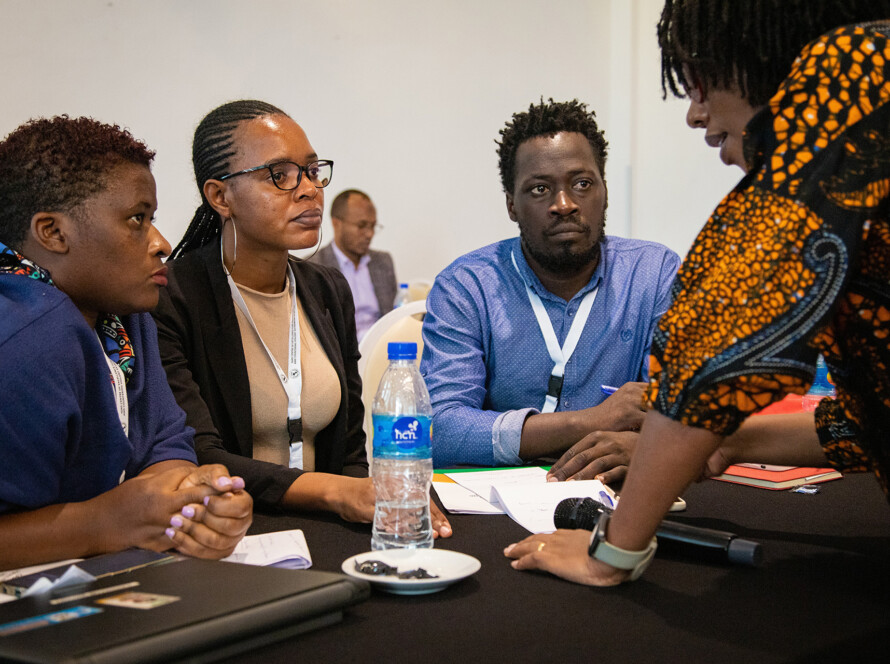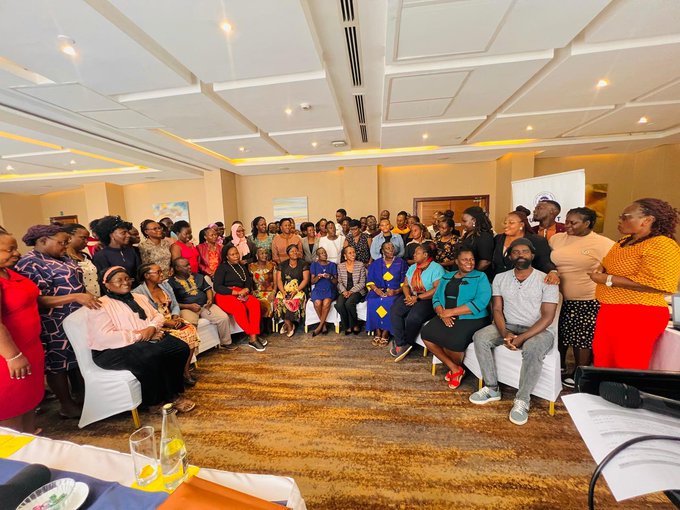Uganda’s oil region holds immense economic potential with proven reserves estimated at 3.5 billion barrels by the end of 2013. While this discovery in the Albertine Graben could generate USD $2 billion annually for 30 years, the certainty for local communities is far more complex. Oil exploration has created an inconsistency of opportunity and challenge, concurrently bringing job creation while increasing social issues including crime and prostitution.
We’ve witnessed first-hand how women in these oil-host communities face a double burden. Despite the promise of prosperity, oil and gas exploration activities have triggered significant socio-economic changes, including shifts in land ownership, conflicts resulting from the displacement. The presence of oil is also ushering in new employment patterns, yet these changes often bypass women and youth from these communities, entirely.
Nevertheless, these aren’t merely victims of circumstance, instead, they’re actively devising innovative mitigation mechanisms to address climate change impacts. Alongside our partners, Citizens’ Concern Africa (CICOA) and East African Crude-Oil Pipeline Host Communities (EACOPHC), we’ve been working closely with these resilient women and youth through our project “Empowering Women and Youth for Resilience against Climate Change Health Impacts in Oil-Host Communities of Hoima, Buliisa and Kikuube districts in Bunyoro, Albertine Region, Western Uganda.”
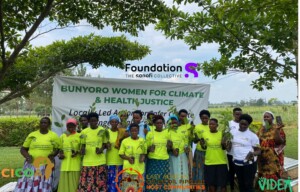
From climate-smart farming to fighting gender-based violence, these women and youth are at the forefront of building resilient, healthy communities in Kikuube, Buliisa, and Hoima districts. At the core of these efforts are innovative approaches like climate-smart agriculture, nature-based solutions, and strengthening local adaptation strategies rooted in indigenous knowledge. We’ve seen first-hand how these grassroots initiatives are transforming lives while addressing one of our time’s most urgent but overlooked crises, the intersection of climate change, public health, environmental injustice, and social exclusion. Their efforts demonstrate that lasting solutions to complex challenges must be community-owned and women-led.
Understanding the challenges: climate and oil impacts on women
Women in from the project targeted areas of Hoima, Buliisa and Kikuube, face a storm of challenges where climate change and extractive industries collide. The impacts hit women particularly hard due to their traditional roles and structural inequalities that persist throughout the communities.
Heat stress and water scarcity
In these communities, climate change isn’t a distant threat but an immediate crisis, involving unpredictable weather patterns. As temperatures rise and rainfall patterns shift, the women bear an outsized burden. Because of their traditional role as caretakers, women must walk increasingly longer distances for water, firewood and many other basic resources. All together, the government’s takeover of land for oil production has disadvantaged these rural women of access to firewood and water sources.
Food insecurity and gender inequality
The agricultural sector employs 72% of Uganda’s working population, with women constituting 77% of this workforce. Yet despite their dominant role, women face significant constraints. Approximately 69% of all women in Uganda don’t own land and only access it through male family members. Land is much more than a mere commodity, it is a crucial resource that sustains over 95% of livelihoods for Ugandans, particularly for women who play a vital role in the agricultural sector. Despite the existence of a legal and policy framework designed to enhance women’s land rights, the translation of these rights into actual ownership remains limited. While Uganda’s legal framework provides the foundation for women’s land rights, systemic cultural practices, inadequate participation in land management, and a dual legal system hinder the effective realization of these rights, a situation requires legislative reform, community engagement, and concerted efforts to empower women to address these challenges. This gender gap creates a 13% difference in agricultural productivity, equating to losses of about $58 million annually.
Oil activities have worsened the situation which has heightened food insecurity. Land formerly used for farming has been acquired for oil refineries and infrastructure, displacing thousands, and those awaiting relocation were stopped from growing crops. The influx of people seeking employment with oil companies has increased food demand beyond what the ecosystem can support.
Health risks in oil-host communities
Women living near oil fields face direct health consequences from environmental degradation. They experience higher exposure to pollution, leading to respiratory and reproductive issues. Moreover, the presence of oil operations has triggered social disruption. Prostitution, previously uncommon in these villages, increased when oil operations began. This has led to rising rates of sexually transmitted diseases including HIV/AIDS in these communities.
How We Are Transforming Oil-Affected Communities
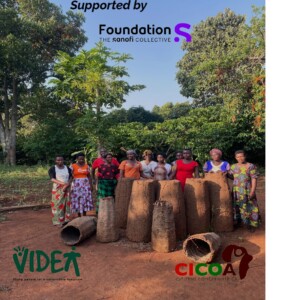
Women’s response: building resilience from the ground up
In response to the mounting challenges, grassroots women across Uganda’s oil region aren’t sitting idle. We have witnessed their remarkable determination first-hand during our recent field monitoring trip across Kikuube, Buliisa, and Hoima districts for our ongoing project.
Mobilizing through community-led Resource Centers
Under the project, we have established local community Women-led Resource Centers (WRCs) that serve as hubs for collective action. These centers have become fundamental in our project and these are a platform, where these women and youth gather, share knowledge and access resources needed to address the above-mentioned challenges.
Engaging youth and women in local solutions
Throughout our monitoring visits, we are using these WRCs to enhance intergenerational collaboration. Youth and women now work together on practical solutions to their communities’ most pressing issues. They’re actively engaged in climate-smart farming, establishing apiaries, and managing impressive poultry farms, with over 2,000 chicken per poultry farm.
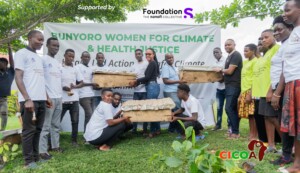
What’s truly exciting is their diversification approach. The groups are now harvesting honey, expanding vegetable gardens with various crops like pineapple, okra, turmeric, cabbage, carrots, and tomatoes not forgetting agroforestry which includes fruit trees. They’re likewise venturing into locally-made beehives, clean energy initiatives such as biogas and briquettes.
Transforming traditional roles into leadership
Perhaps most significant is the development in women’s roles. Formerly limited to domestic responsibilities, these women are now community leaders, entrepreneurs, and environmental stewards. Particularly, the established groups have formed saving SACCOs, embracing financial sustainability.
The transformation has been profound. Across these districts, women who once felt powerless in the face of climate change and oil and gas impacts are now at the forefront of building resilient communities. In fact, our capacity-building sessions have continued nurturing them to sustain and expand these climate-smart practices, highlighting that lasting change happens when communities own the solutions.
Innovations in practice: climate-resilient livelihoods
Across the Albertine Graben, women are pioneering practical innovations that build resilience against climate impacts while sustaining livelihoods. Their creativity demonstrates how grassroots solutions can effectively address compound environmental challenges.
Climate-smart agriculture and crop diversification
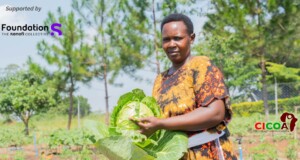
Under our project, the Women and youth farmers groups established have embraced irrigation systems to cope with erratic rainfall patterns. We installed water tanks (10,000Litres), in Kikuube, the small-scale irrigation systems supported by these water tanks, now cover a big chunk of acres of farmland, with potential for expansion, with presence of future support. These small-scale irrigation systems distribute water up to three kilometers, helping communities adapt to increasingly unpredictable rain cycles. Crop diversification has appeared as a cornerstone strategy, protecting against total crop failure while improving soil health.
Poultry farming and honey production
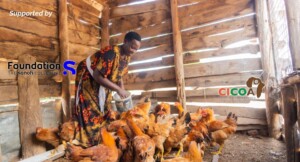
Both the women and youth groups are involved in poultry farming, with each of the poultry farms, constituting more over 2,000 chicken. These farms support these youths and women, with income to sustain their families as well as the saving groups.
Beekeeping has created significant economic opportunities, especially for the women. These sell kilograms of comb honey, and refined honey, generating income, to add into the SACCOs. As we observed during our monitoring visit, these apiaries offer dual benefits, pollinating crops while providing sustainable income.
Biogas, briquettes, and clean energy adoption
Working closely with an agricultural team of experts, the youth and Women’s groups under our project, across the three districts, have received training to produce cooking briquettes from agricultural waste, offering a sustainable alternative to traditional charcoal, as well as created a business, turning recycled agricultural and biomass waste into fuel briquettes transforming this into a viable livelihood. These initiatives reduce deforestation while creating employment opportunities. Indeed, these women now use briquettes and biogas as an alternative to traditional charcoal.
Creating safe, inclusive, and empowered communities
Beyond climate innovations, gender-based violence remains a persistent challenge in these oil-affected communities. Partners to some of these women and related developments are major perpetrators of violence against women in forms ranging from sexual harassment to assault and verbal abuse.
Establishing the WGSS network
We’ve also expanded our efforts by launching a Women and Girls’ Safe Space (WGSS) network as a key protection strategy. These spaces offer:
- Social network rebuilding opportunities
- Contextually relevant skills acquisition
- Access to non-stigmatizing GBV response services as well as act as a referral.
- Capacity-building on women’s rights and health services.
The Women and Girls’ Safe Space (WGSS) network has emerged as a crucial protection strategy to address increasing gender-based violence cases in these communities. The space is managed by our community liaison officers specifically trained to address, prevent, and respond to SGBV, conflict resolution, counselling, gender equality, and peace building.
Providing trauma-free, non-judgmental spaces
The term “safe” here signifies the absence of trauma, excessive stress, and violence. These space provides the women with a platform, to express themselves freely without fear of judgment or harm.
The effectiveness of this approach is demonstrated throughout Uganda, with similar programs operating across 23 refugee settlements, reaching approximately 1,880 refugee women.
Promoting women’s rights and health education
At the core of these safe spaces is education about women’s rights, health, and available services. Following community-led research on gender-based violence in Hoima, Buliisa, and Kikuube districts, establishing these spaces was a direct response to identified needs. Local duty-bearers acknowledge that sensitization, dialogue and counselling have shown to be necessary aspects in reducing domestic violence cases.
The environment cannot be well protected if the community is unhealthy with high level of violence and food insecurity, looking at how gender equality and environmental protection are fundamentally interconnected in building truly resilient communities.
VIDEA Analysis about these resilient rural women
These women stand at the intersection of climate change and oil and gas extractive development, yet refuse to be defined by these challenges. Their remarkable resilience through community-led solutions that address pressing environmental and social issues signifies how committed they are. These grassroots initiatives demonstrate how local knowledge, when properly supported, can create sustainable pathways forward.
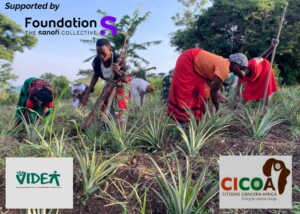
Women who once walked miles for increasingly scarce water now manage booming apiaries and vegetable gardens. Mothers previously struggling with food insecurity now operate poultry farms supporting thousands of homes and household incomes. Community members formerly dependent on disappearing forests for fuel now produce clean energy alternatives through biogas and briquettes. Undoubtedly, these transformations represent more than economic opportunities, and symbolize an ultimate shift in women’s roles from vulnerability to leadership.
The success of these initiatives stems from their community-owned nature. Rather than imposing external solutions, our work with local partners supports women’s inherent knowledge and capabilities. The establishment of Women and Girls’ Safe Spaces addresses the critical intersection between gender-based violence and environmental degradation, recognizing that true resilience must include both physical safety and ecological sustainability.
After witnessing these transformations first-hand during our field monitoring visits, we remain convinced that lasting climate resilience must center women’s leadership. The grassroots innovations spreading across Kikuube, Buliisa, and Hoima districts prove that effective climate adaptation doesn’t always require complex technology or massive investment. Sometimes, it simply requires listening to those most affected and supporting their vision.
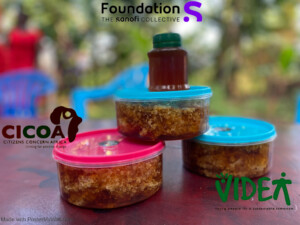
These oil-host communities face significant challenges, certainly. Nevertheless, the women leading these initiatives demonstrate that adversity often triggers the most powerful solutions. Their work rebuilding social networks, developing sustainable livelihoods and restoring degraded environments points towards a future where both people and ecosystems live in harmony despite changing conditions.
Though climate change and oil development present tough obstacles, the women of in these oil-host communities in the Albertine oil corridor show us that community-led, gender-responsive approaches offer the best hope for building truly resilient communities. Their story reminds us that those closest to the problem are often closest to the solution.
Key Takeaways
- Women lead climate adaptation: Despite facing dual pressures from oil development and climate change, women are pioneering practical solutions like climate-smart farming, beekeeping, and clean energy production.
- Community-owned solutions work best: Resource centers and women’s groups create sustainable change by supporting local knowledge rather than imposing external solutions.
- Diversification builds resilience: Women are reducing vulnerability through crop diversification, poultry farming, honey production, and biogas initiatives that provide multiple income streams.
- Safe spaces enable empowerment: Women and Girls’ Safe Spaces address gender-based violence while promoting rights education, creating foundations for broader community resilience.
- Economic empowerment drives change: From managing 2,000-chicken farms to producing fuel briquettes, women are transforming from aid recipients to community leaders and entrepreneurs.
The success of these initiatives proves that effective climate resilience must center women’s leadership and community ownership. When properly supported, grassroots innovations can address complex environmental and social challenges simultaneously, creating pathways to sustainable development that benefit entire communities.
